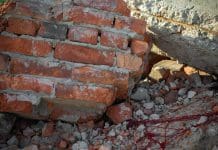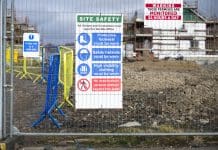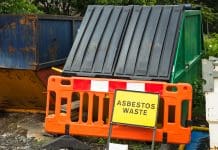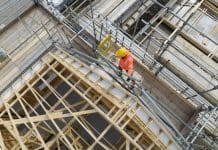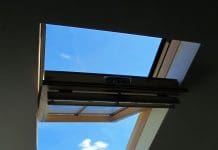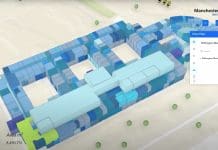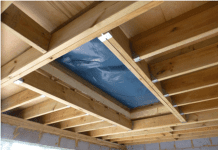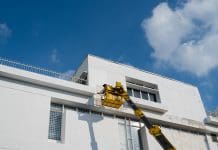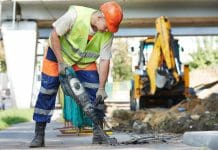Darren Evans, Technical Director, Airborne Environmental Consultants Ltd talks about the importance of personal monitoring to ensure compliance with asbestos regulation…
Personal monitoring is explicitly required to comply with the Control of Asbestos Regulations 2012, specifically Regulation 19.
Regulation 19 states that :
…every employer must monitor the exposure to asbestos of any employees employed by that employer by measurement of asbestos fibres present in the air;
• at regular intervals; and
• when a change occurs which may affect that exposure
The employer must keep suitable records of the monitoring of the tasks, or reasons why this was not carried out, and these records must be kept for employees for 40 years (as required by Regulation 22), and the employer must provide these records to the employee and also to the HSE if requested. The approved code of practice also states (para 486): The results from all personal monitoring carried out by the LARC during the period of the license should be collated and submitted to HSE as part of the license renewal procedure
In addition, all work with asbestos requires a risk assessment, as documented in Regulation 6. As part of this assessment the Licensed Asbestos Removal Contractor (LARC) must determine the nature and degree of exposure which may occur, and, consider effects of control measures, and, consider the results of monitoring under regulation 19. This risk assessment leads to the control methods applied in the plan of work to reduce fibre levels during the work, and therefore exposure to employees carrying out the work (regulation 7).
This plan of work provides the information to employees, who should also receive instruction and training if liable to be exposed to asbestos, and how to work safely, and why, when & how to wear RPE and PPE (Regulation 10).
Regulation 11 then places the onus on the employer to prevent exposure of any employee. However, for asbestos removal contractors this is unavoidable, so the requirement is to ensure that PPE & RPE provided is suitable, and that no employee is exposed above the Control Limit of 0.1f/cm³. This is typically demonstrated by personal monitoring, carried out under regulation 19.
Finally, the detail of the work carried out should form part of the health records for employees engaged in licensed asbestos works. The monitoring results as well as detail of the works should be kept as part of regulation 22.
The HSE Asbestos Licensing Unit has stated that personal monitoring is an area for improvement, and that this is an area which will be looked at during licensing applications and renewals. (see ALG minutes at http://webcommunities.hse.gov.uk/connect.ti/asbestosliaison/groupHome).
The HSE have highlighted several problems with personal monitoring as follows:
- Analysts are rarely directly employed by LARCs to carry out personal monitoring, and personal monitoring is mostly carried out when ‘the client’ employs the analyst directly, or when the analyst is on site for the clearance, so monitors ‘fine cleaning’ at the end rather than specific tasks likely to lead to greater exposure.
- Some analysts reported a ‘lack of co-operation’ i.e. poor detail on task, or names of operative.
- Analysts rely on operatives using the pump inside the ‘live’ enclosure (which the analyst cannot enter). Some instances of pumps switched off, or left at the air lock. Conversely operatives state that wearing the pumps can be inconvenient and hinder their work, for example accessing tight spaces, behind plant etc.
- Review of some analysts’ paperwork on personals has shown some common errors, and the HSE have intimated they will up inspections on analysts as they feel some (not all) are unaware of the methodology or the reasons for personal monitoring. Particular problems are inadequate detail of tasks being carried out, and incomplete names or nicknames for operatives’ records, required under regulation 22.
- Other common problems have been poor methodology, reporting the limit of quantification incorrectly e.g. as <0.01f/ml, and too high sample volumes then not being able to count filter due to particulate loading (i.e. flow rates too high). This perhaps has been exacerbated by the fact the Analysts’ guide, HSG 248, has still not been updated since 2005, though a new version is due for publication in the near future.
When the new HSG 248 is eventually published, it is expected to contain more specific information required by the analysts. The following list was published in the draft guidance and this shows the HSE’s expectations when carrying out personal monitoring:
Sampling must be for sufficient duration, and will be deemed inadequate by the HSE and by UKAS if it fails to record the following information:
- Person’s name and job title. Full name, as used for 40 year records.
- Actual work activities carried out by the person (periods and extent). Give detail on the task(s), how long etc
- General work activity in the area
- Asbestos product being removed (e.g. AIB ceiling tiles)
- Type(s) of asbestos likely to be involved
- Removal method e.g. shadow vacuuming,
- Type(s) of dust suppression control measures employed (not RPE)
- Type of RPE i.e. model and protection factor.
- An opinion on the effectiveness of control measures.
- Other factors which may affect the result (e.g. confined location, external location, condition of the material being removed or worked on, whether ACM nailed or screwed in)
- Photo of work area (through viewing panel)
(from DRAFT Asbestos: The Analysts’ Guide 2016 HSG248 8 Prepared by the Health and Safety Executive 2015)8
The expectation is that the LARC ensures personal monitoring records are in place, and plans for this over the license period. Planning should include coverage of all discrete tasks, so that sheeting up, pre-clean, fibre suppression, removal, cleaning, bagging, etc are all covered, and recorded. Accurate information must be obtained by the analyst for the records. This should be simple as relevant information should be contained in the plan of work.
The sampling period must be sufficient to ensure it is fully representative of the work, and not just ‘snapshots’ of part of a task. Sampling periods should be for the duration of a specific task for shorter duration activities or a shift to measure exposure levels. Sequential sampling may be needed in high dust environments to prevent the filters becoming overloaded and uncountable, and for smaller jobs, sequential monitoring for discrete tasks across a shift or a duration of the work, allowing a time-weighted average exposure to be calculated if needed for the 4-hour control limit, as well as exposures for each task.
AEC is running a complimentary Personal Air Monitoring seminar at our Rainham office on Wednesday 14th September. The seminar will cover the above topics, including assessing staff exposure levels, control measures and legislation. To book your place(s), please email customersupport@aec.uk.net or call 0161 872 7111.
Darren Evans
Technical Director
Airborne Environmental Consultants Ltd


